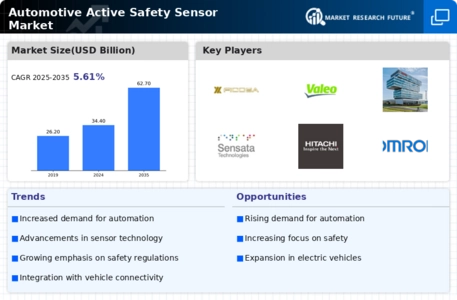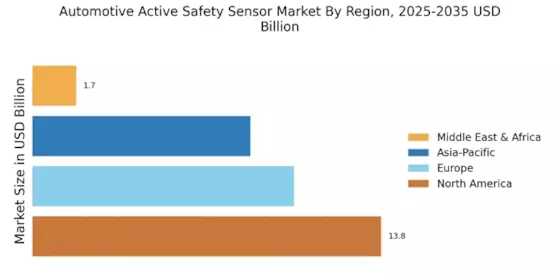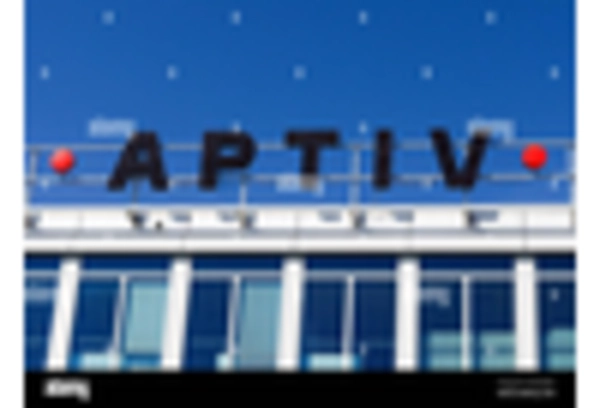The Automotive Active Safety Sensor Market is currently characterized by a dynamic competitive landscape, driven by technological advancements and increasing consumer demand for enhanced vehicle safety. Key players such as Bosch (DE), Denso (JP), and Continental (DE) are at the forefront, each adopting distinct strategies to solidify their market positions. Bosch (DE) emphasizes innovation through substantial investments in research and development, focusing on integrating advanced sensor technologies into their product offerings. Denso (JP), on the other hand, appears to be pursuing strategic partnerships to enhance its capabilities in autonomous driving technologies, thereby expanding its market reach. Continental (DE) is actively engaging in mergers and acquisitions to bolster its technological portfolio, indicating a trend towards consolidation in the sector. Collectively, these strategies contribute to a competitive environment that is increasingly focused on innovation and technological integration.
In terms of business tactics, companies are localizing manufacturing to reduce costs and enhance supply chain efficiency. This approach is particularly evident in regions with burgeoning automotive markets, where local production can mitigate logistical challenges. The market structure is moderately fragmented, with several key players exerting significant influence. This fragmentation allows for a diverse range of products and innovations, although it also intensifies competition among established and emerging firms.
In August 2025, Bosch (DE) announced the launch of a new line of radar sensors designed to enhance vehicle detection capabilities in adverse weather conditions. This strategic move is likely to position Bosch as a leader in safety sensor technology, addressing a critical consumer concern regarding sensor reliability. The introduction of these advanced sensors could potentially set new industry standards, further solidifying Bosch's competitive edge.
In September 2025, Denso (JP) entered into a collaboration with a leading tech firm to develop AI-driven safety systems for vehicles. This partnership is indicative of Denso's commitment to integrating cutting-edge technology into its product offerings, which may enhance its competitive positioning in the rapidly evolving automotive landscape. By leveraging AI, Denso aims to improve the accuracy and responsiveness of its safety sensors, thereby appealing to manufacturers seeking to enhance vehicle safety features.
In October 2025, Continental (DE) completed the acquisition of a startup specializing in LiDAR technology, which is crucial for the development of autonomous vehicles. This acquisition underscores Continental's strategy to expand its technological capabilities and diversify its product portfolio. By integrating LiDAR into its active safety sensor offerings, Continental is likely to enhance its competitive stance in the market, particularly as the demand for autonomous driving solutions continues to grow.
As of October 2025, the competitive trends in the Automotive Active Safety Sensor Market are increasingly defined by digitalization, sustainability, and the integration of artificial intelligence. Strategic alliances are becoming more prevalent, as companies recognize the need to collaborate to stay ahead in a rapidly changing environment. Looking forward, competitive differentiation is expected to evolve from traditional price-based competition towards a focus on innovation, advanced technology, and supply chain reliability. This shift may redefine market dynamics, compelling companies to prioritize research and development to maintain their competitive advantages.

















Leave a Comment